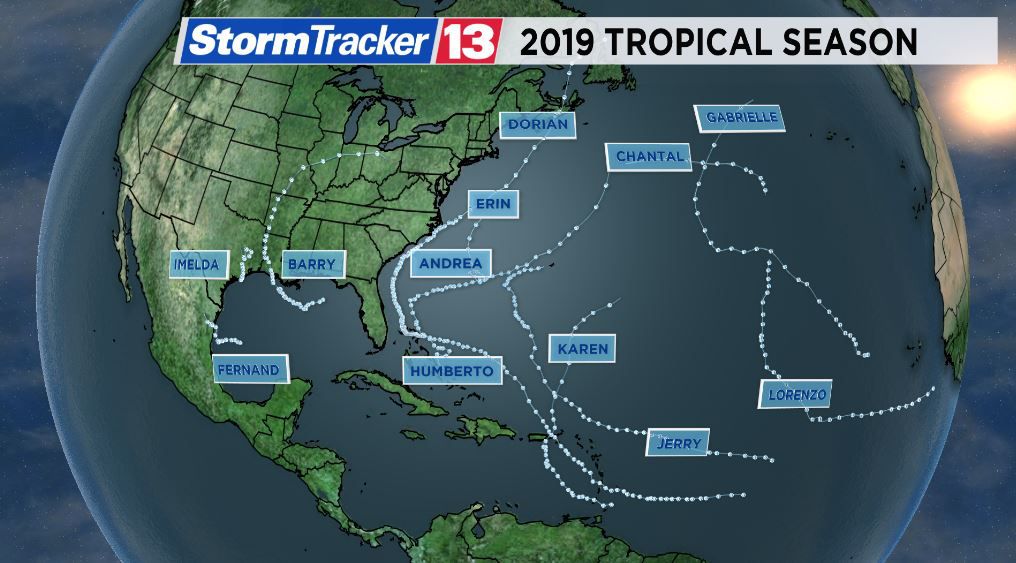ORLANDO, Fla. — The 2019 Atlantic Hurricane Season has already produced 12 named storms, and there are still two more months left to go.
- READ MORE: Spectrum News 13's Weather Blog
- STORM SEASON 2019: Interactive Storm Tracker | Latest News
Lorenzo became the fifth hurricane of the season at the end of September and the third major hurricane of the season.

A major hurricane is a storm that becomes a category three or stronger.
On average, there are twelve named storms in any given year, and we have reached that mark.
The National Oceanic Atmospheric Administration (NOAA) forecast earlier this year called for 10 to 17 named storms with five to nine becoming hurricanes.
NOAA also forecast for there to be two to four major hurricanes.

There have already been three major hurricanes and of the total twelve named storms we’ve had, five of them have become hurricanes.
The average number of major hurricanes in any year is three with an average of six hurricanes each year.
Outside of Andrea that was briefly a sub-tropical storm in May, the rest have reached tropical storm strength.
Bottom line, this year is running at average and with more time left to go, it could finish above average.
October can be a particularly active month for hurricanes in Florida.
Hurricane Michael made landfall in the Panhandle on October 10 of 2018 while Hurricane Matthew skirted along the coast of East Florida in early October 2016.
Other notable storms during the month of October include Wilma in 2005 and Irene in 1999.
We typically watch areas closer to Florida for tropical development especially the Caribbean during October.
Hurricane season runs through November 30th.




